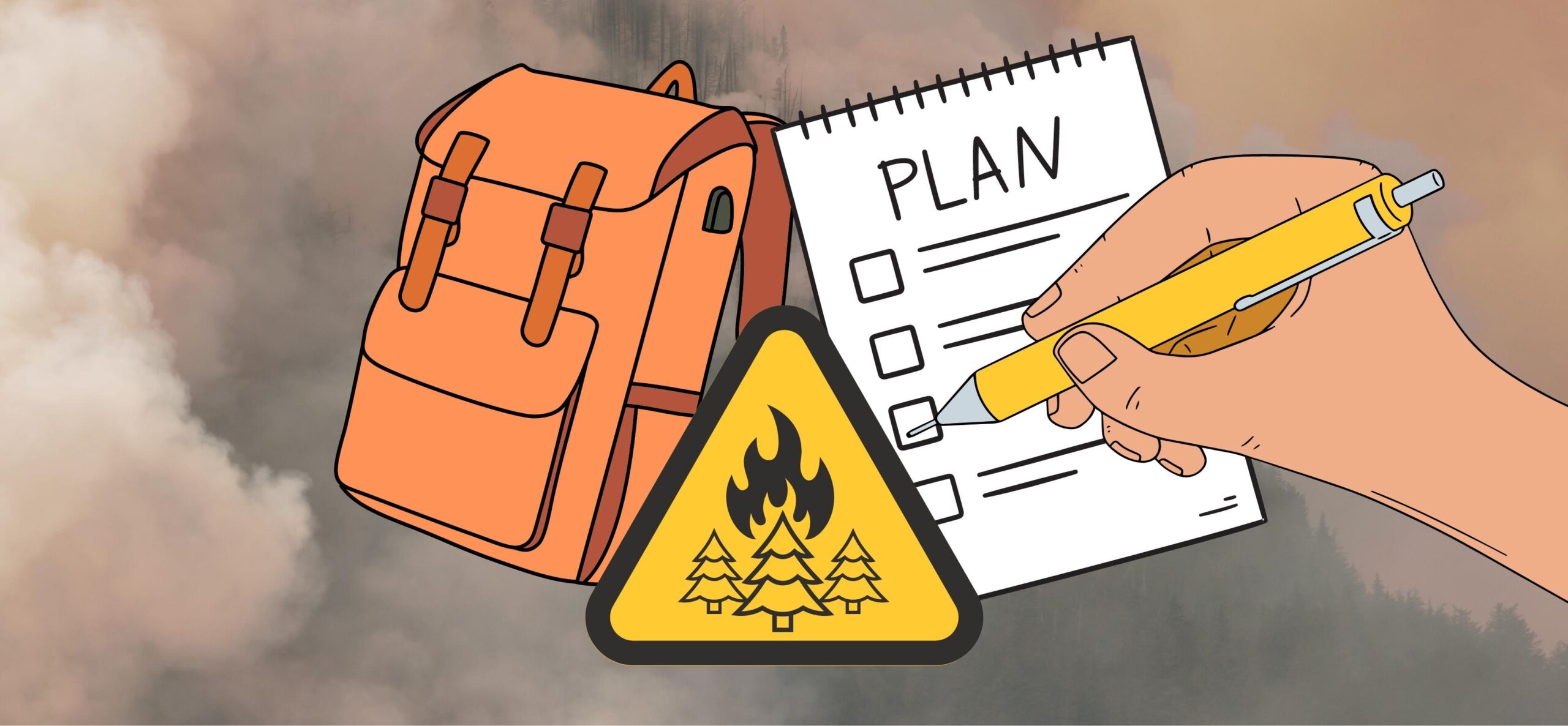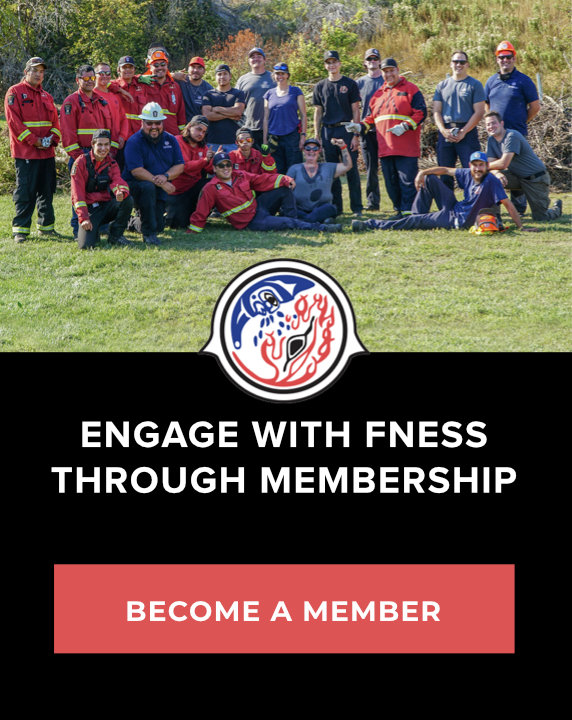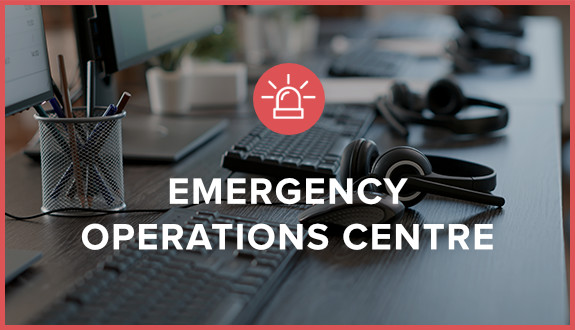
Wildfires are unpredictable and you never know when you or your community might be affected. However, we can all be proactive by taking the recommended steps before it happens.
On this page
- 5 steps to prepare your family for a wildfire emergency
- 5 steps to prepare your community for a wildfire emergency
Last updated: July 2024
5 steps to prepare your family for a wildfire emergency
Being prepared for an emergency or evacuation not only reduces the risk of injury, loss, or damage— it also helps reduce stress and anxiety because you’ve already put a plan in place to protect everyone and everything important to you.
Step 1: Make an emergency plan
Ensure your family knows what to do in an emergency by creating an emergency plan. It only takes 20-minutes to create a plan so setup a time for everyone in your household to get together and start planning! It’s also recommended to let someone outside your home know your plan too in case you are unreachable during the emergency.
Emergency planning templates:
NEW Interactive Emergency Ready Plan: Prepared BC has made it easier than ever to complete a home emergency plan online. All you have to do is follow the prompts and then save your plan as a PDF to your computer, mobile device, or print it out.
Fill-in-the-Blanks Home Emergency Plan: If you don’t want to create your plan online, you can download and print the fill-in-the-blanks Home Emergency Plan instead.
Pre-register for emergency support services:
As part of your plan, pre-register for Emergency Support Services (ESS) before you need help. The most secure way is to log in to Evacuee and Registration Assistance (ERA) tool with BC Services Card Login. Learn more and self-register at ess.gov.bc.ca.
Step 2: Make Grab and Go Bags
In an emergency, it’s important to have some supplies ready to grab and go in case you must quickly leave your home. The list below is a guideline to help you prepare and pack your bags. Most emergency organizations recommend that you prepare to be self-sufficient for at least 72 hours so make sure to pack accordingly. If you have a vehicle, it’s a good idea to have some of these items in there too in case you’re on the road during an emergency. Just make sure there’s nothing in your vehicle kit that could melt or explode in the heat and ruin other items. And don’t forget to make a grab and go bag for your pets too!
Basic Emergency Checklist:
Pen and notepad
Phone charger and battery bank
Flashlight – wind up or battery powered (and extra batteries)
Radio – wind up or battery powered (and extra batteries)
First aid kit
Personal toiletries and medication
Seasonal clothing
Extra keys for house and vehicle
Food – nonperishable such as energy bars, dried and canned foods (and a manual can opener)
Water – at least 2 liters of water per person, per day
Cash and change
Important family documents – ID, passport, status card, health card, driver’s license, insurance papers, bank records
Whistle
Emergency blanket
Emergency plan and contact information
Visit Prepared BC for more information on building an emergency kit and grab-and-go bag.
Step 3: Protect your home
Firesmart™ your home by reading and following the FireSmart Begins at Home Guide.
Protect your home even further using FireSmart’s Landscaping Guide.
Step 4: Know your evacuation stages
Depending on the severity of the situation, an Evacuation Alert or Order may be issued. It’s important to know the difference and to always follow the advice and direction of your local authorities. Prepared BC provides and explains what the evacuation terms mean:
- Evacuation Alert: Be ready to leave on short notice.
- Evacuation Order: Leave the area immediately. You are at risk. Make sure to check in at an Emergency Support Services (ESS) reception centre. Contact family and friends and let them know where you are and that you are safe.
- Tactical Evacuation: This happens when a sudden threat to life requires immediate action and there is no time to prepare or issue written warnings. These types of evacuations are often coordinated by the RCMP or local police, with assistance from other agencies.
- Evacuation Rescind: All is now safe and you can return home.
Step 5: Download Prepared BC’s Wildfire Preparedness Guide
The Wildfire Preparedness Guide will help you prepare for what to do before, during, and after a wildfire.
5 steps to prepare your community for a wildfire emergency
Preparing your community for an emergency can be a daunting task, but it doesn’t have to be. Completing the tasks below can help your community be prepared in case of a wildfire emergency.
Step 1: Create a Planning Committee
Creating a planning committee helps your community determine personnel, assign roles, and assign responsibilities. Key members of this committee may include representatives from:
- First Nations departments (e.g., health, finance, planning)
- Local law enforcement and first responders (e.g., fire, ambulance, emergency social services)
- Relevant agencies and organizations (e.g., health authority, school district)
Step 2: Create a Community Emergency Management Plan
Create or locate an emergency plan for your community and ensure it is up to date. Emergency Management BC’s Emergency Management Planning Guide for Local Authorities and First Nations is a great resource if you need help.
Step 3: Create a community map
Creating a community map helps identify high hazard and high-risk areas such as:
- Wildland-urban interface zones
- Infastructure (e.g., roads, communication systems, water, and power lines)
- Water sources
- Elder’s homes
- Community centres
- Places of special interest (e.g., graveyard, sacred places)
Step 4: Create contact lists
Contact lists help identify emergency resources and community contacts. In your community contact lists, we also recommend compiling a list of community members that may require extra assistance such as elders and people with disabilities.
Step 5: Create relationships with partner/host communities
It’s important to know who you can lean on for support during an emergency. Build relationships with your neighbours, both inside and outside of your nation. Reach out to other communities and develop mutual agreements to provide and receive assistance to one another during emergency situations.
If you need to contact FNESS during an emergency, please call the FNESS After Hours Assistance Line:
1-888-822-3388






![24 Jonas Joe (5P63)[67] copy profile photo of Jonas Joe](https://www.fness.bc.ca/wp-content/uploads/2024/11/24-Jonas-Joe-5P6367-copy-scaled.jpeg)

